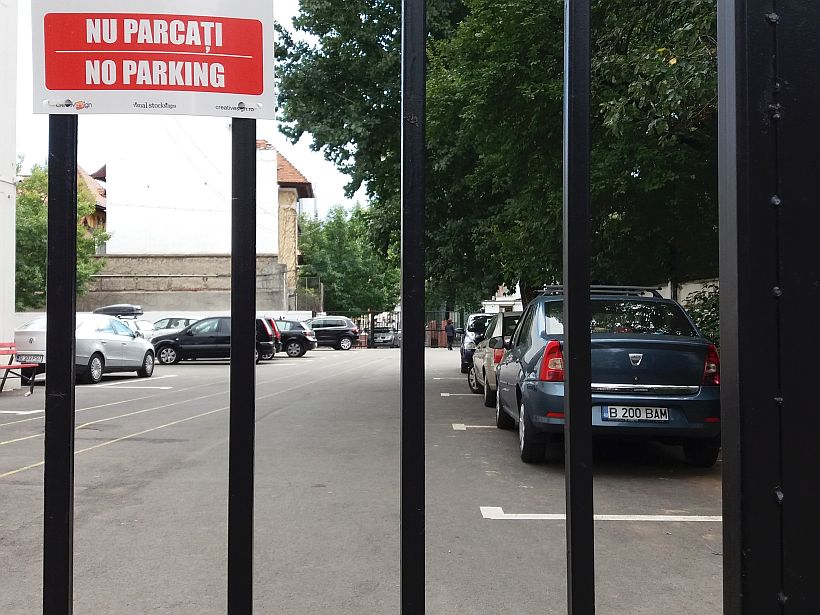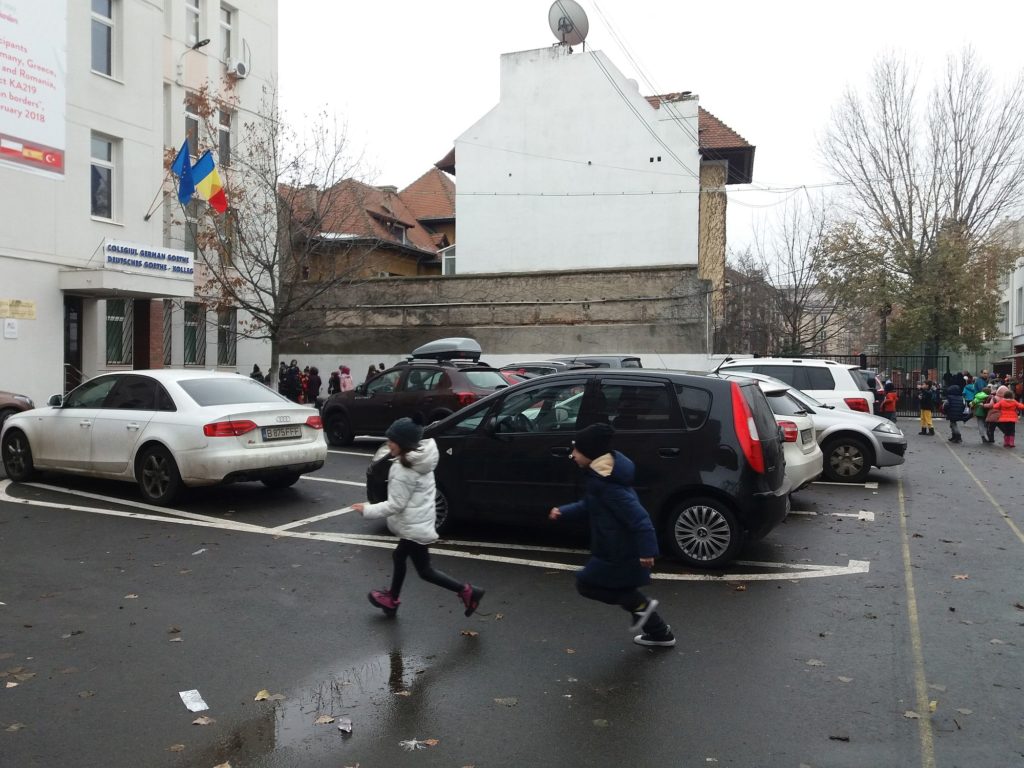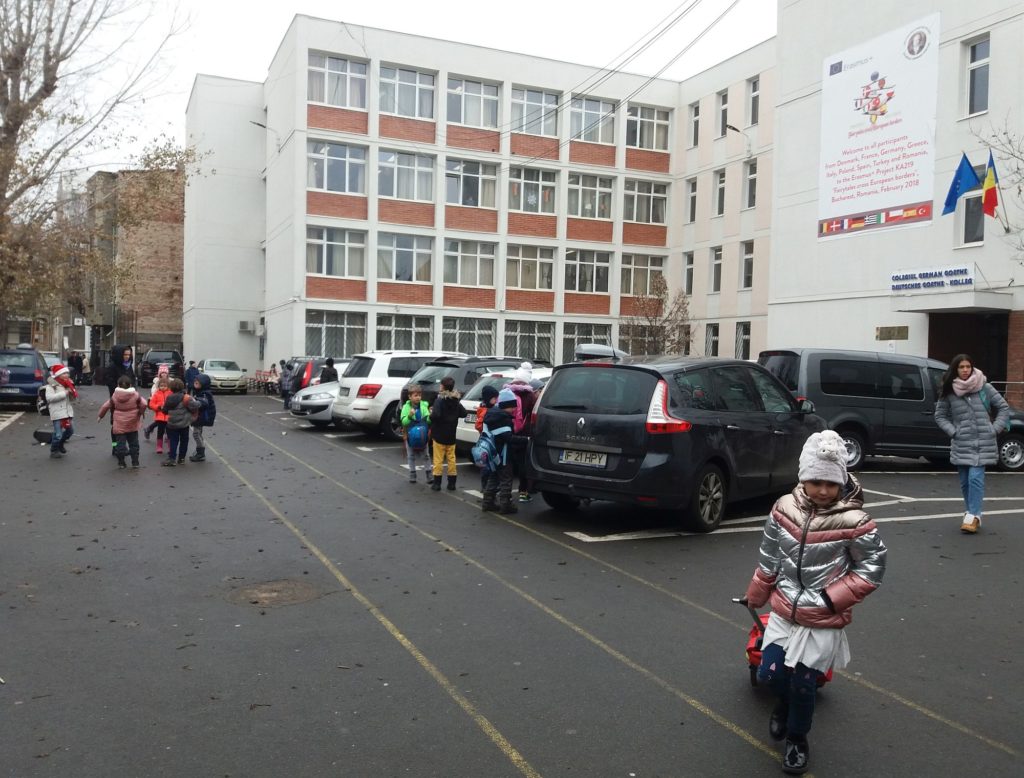Text & photos by Ștefan Ghenciulescu
Let’s say you have an overcrowded school (grades 1 to 12), with limited space for games and sports in two small schoolyards. How do you go about it? Easy: You convert the front schoolyard into a teachers’ parking lot. And you do it properly, neatly marking the parking places with paint. The children can go on playing there, you don’t forbid it, but they will have to adapt their games, squeezing between the cars.
This school is the Goethe German College in Bucharest; and this apparently minor intervention plunged me into deep depression. After that, I found out that this happens in a lot of other schools.
So what? You might say. After all, Romania is the country of double or triple fences and inaccessible green areas, where parking your car on the sidewalk and blocking it is socially accepted, where apartment blocks are built on green areas, and public space is violated with impunity.
And you’d be right. However, these are usually breaches by individuals, further compounded by an ineffective enforcement of laws, incompetent local administration, etc. However angry they might make us, we can remain optimistic, rationalizing that all this is part of a slow but inevitable process towards urban normality, that we are (re)building together a form of commons: every little you do counts, in time, people will learn, things will get better… and so on.
Well, and then there comes School and stabs you in the back; because we don’t deal here with the boorish driver of a luxury car, or a barely literate mayor, but with teachers< in the particular case with the board of a prestigious school that claims to have a European vocation, This is not an individual making a covert deal to appropriate a piece of land; this is an institution, with a budget and a plan, and that thus clearly states its priorities.
Admittedly, having nowhere to park must have felt immensely frustrating for the principal and many teachers there. As a teacher, however, you must put your students’ well-being above all that. It is part of being a good teacher and, not least, a good citizen, a responsible member of the polis.
Whether they had a permit to do it or not, I don’t know. But if they did, then it must have been illegally obtained, because it means depriving students of recreational space—not that Romanian schools would anyway observe the per capita requirement. Leaving that aside, the phenomenon really shows how long we still have to go. Well, maybe no big surprise here, but then it really hurts when the ‘vectors of change’ as the new wooden language says, turn into the opposite direction. It might also be that I expected this particular school to set a good example—as a former student of a school where I made life-long friends and where I was taught by (some) excellent teachers that were also true role models.
Now, to end on a both more optimistic and realistic note: I am quite sure that a lot of teachers do not really support this action. Some of them and some parents will surely protest and demand that the parking be undone. And the development of a civic consciousness among students, that emerges in more and more schools, will, I think, play some role also here.





